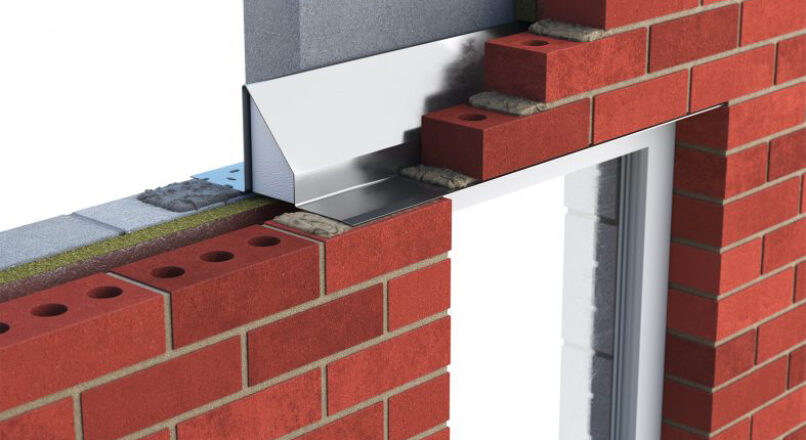
Choosing the Right Lintel | What lintel do I need? | Abc Depot
A lintel is an auxiliary level block that traverses the space or opening between two vertical supports. It very well may be a decorative architectural element, or a joined ornamented auxiliary thing. It is regularly found over entryways, doors, windows, and chimneys. On account of windows, the base range is rather alluded to as a ledge, at the same time, in contrast to a lintel, doesn’t serve to hold up under a heap to guarantee the uprightness of the divider. Cutting edge lintels are made utilizing prestressed concrete and are additionally alluded to as bars in bar and block chunks or ribs in rib and block sections. These prestressed concrete lintels and blocks, Construction material are parts that are pressed together and propped to shape a suspended floor concrete slab.
Types of Lintel
Depending on the costing and availability of materials, different materials are used for lintel construction. Lintels are classified into the following types according to the elements of their development:
Timber lintel
Stone lintel
Reinforced concrete lintel
Brick lintel
Reinforced brick lintel
Steel lintel
1. Timber Lintel
In olden days of construction, Timber frame lintels were for the most part utilized. In any case, presently days they are supplanted by a few current methods, anyway, in bumpy zones, these are utilizing. The fundamental disservices with timber are more expensive and less sturdy and defenceless against fire. If the length of the opening is increasing, at that point it is given by joining different quantities of wooden pieces with the assistance of steel jolts. In the event of more extensive dividers, it is made out of two wooden pieces avoided as much as possible with the assistance of pressing pieces made of wood. Once in a while, these are reinforced by the arrangement of gentle steel plates at their top and base, called flitched lintels.
2. Stone Lintel
Rectangular bits of stone can be used as a lintel. This sort of solid wall lintel is for the most part utilized here where the stone is amply open. In case the length of the opening is long, by at that point, regardless, two bits of timber are joined to give the lintel everything thought about openings. They are only utilized in bumpy structures as they weigh excessively and due to the non-accessibility of different materials for their development. Its utilization is will undoubtedly stone workmanship structures. Stone lintels must be used by a comprehension of the trademark layering. The thickness of the stone lintel is a noteworthy factor for its plan. As a thumb rule, the thickness is taken as 4 cm. Per 30cm length of the range and the base thickness ought to be 8 cm. Such a lintel will be firm and strong.
3. Reinforced Concrete Lintel
At present, reinforced concrete lintels installation are normally being used. In this sort, support is utilized to conquer the low flexible issue in concrete. They are created in present-day structures. They are reasonable for substantial burdens and bigger ranges. Their thickness is kept around up to 8 centimetres for each meter. RCC lintels can be either precast or thrown in-situ. By and large, precast reinforced concrete lintels are utilized when the supreme lintels load tables range is littler. Lintel width ought to be equivalent to divider width. The profundity of the lintel relies upon the length of the range and the stacking’s extent.
4. Brick lintel
These are utilized when the opening is under 1m and lesser burdens are acting. Its profundity shifts from 10 cm to 20 cm, depending upon the range. Bricks with frogs are more reasonable than typical bricks since frogs when loaded up with mortar gives more sheer obstruction of end joints which is known as a joggled brick lintel.
5. Reinforced Brick Lintels
Heavy loadings and more substantial span length are the problems for brick lintels. These can be overwhelmed by utilizing the reinforcement bars. Reinforced brick lintels in this manner offer more help than the brick lintels. The profundity of the reinforced brick lintels is equivalent to 10 cm. or on the other hand different of 10 cm (or one brick thickness). The course of action of the bricks ought to be with the end goal that there is sufficient space in the long way between the neighbouring bricks for the addition of gentle steel bars as reinforcement. After inclusion bars, the rest of the hole is loaded up with 1:3 concrete mortar. 6 mm bars are utilized as vertical stirrups at each third vertical joint. 8 to 10 mm bars put at the base are utilized as essential reinforcement.
6. Steel Lintels
Steel lintels can be reasonable when the superimposed burdens are substantial, and the initial holes are noteworthy. Steel lintels are ideal when the profundity of lintel assumes a fundamental job because the creator can’t overlook the profundity of reinforced solid lintels because of substantial burdens. These lintels comprise of channel segments or moved steel joists or channel areas either utilized independently or in the blend of a few units. Contingent on the necessities, the lintel can be a solitary area or blends of at least two. Single steel joist is either implanted in concrete or cladded with stone looking to keep a similar width as the divider. Blend of at least two units is set one next to the other and held in position by tube separator. Alleviating with water is practised in any occasion for ten days.

Leave a reply